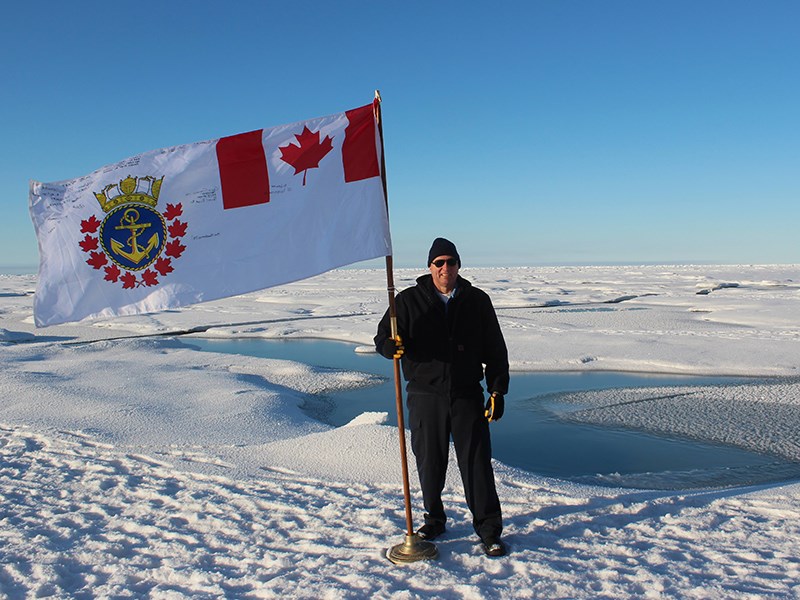Standing at the geographic North Pole, compasses spinning frantically, the only possible direction available to an Arctic traveller is south.
That’s just one stunning detail now-retired Canadian Coast Guard captain Marc Rothwell wrote about his historic trip of more than 4,500 nautical miles across the Arctic Ocean last summer.
It was a trip not only significant for the nation, but also for Powell River’s Royal Canadian Sea Cadet Corps (RCSCC) Malaspina, as the youth group’s flag was flown above the polar ice.
During last summer, Canadian icebreakers CCGS Louis S. St-Laurent and CCGS Terry Fox returned to the geographic North Pole to continue data collection and survey work as part of Canada’s claim to parts of the Arctic Ocean seabed. It was their second visit to the pole in as many years, though Rothwell’s first.
“It was not uncommon to steadily steam through ice that was three metres thick,” wrote Rothwell, St-Laurent captain. “Often the Louis would bring up on heavy ice ridges, these reaching more than 10 metres in height. The ship would then have to back and ram until breaking through the ridge to continue onwards.”
Rothwell wrote that the plan was for both ships to run in “predetermined parallel transect lines,” while collecting data in and around the polar area. The six-week journey took them from Norway to the eastern side of the Lomonosov Ridge, a long undersea feature that runs from near Ellesmere Island in Nunavut northward over the pole.
Canada, Russia, Denmark and Norway all have competing claims to parts of the seabed in the area. The data collected, Rothwell wrote, “could result in a significant claim and access to ocean bottom resources for Canadians in the future.”
He added that once at the pole, it was with great interest he noted how the summer sun moved in a tight circle high in the sky for the hours they were there.
While the primary aim of the mission was scientific and political, Rothwell, who was planning his retirement after the voyage, saw the trip as an opportunity to honour the legacy of Royal Canadian Sea Cadets Corp Malaspina, his introduction as a youth to the mariners’ life sailing boats on Powell Lake.
Rothwell grew up in Powell River and returned last May to inspect Powell River’s sea cadet corps, RCSCC Malaspina, for its annual review. During that visit he had the cadets and officers sign a corps ensign with the idea that he would take it with him to the North Pole.
Rothwell had the Malaspina flag flown on the St-Laurent’s mast as they approached the pole and when the ships arrived on August 28 he had it taken down and flown on the ice at the top of the world. Rothwell also collected a water sample which he said he plans to give the sea cadets as well. Rothwell plans to return the flag to the corps for display.
The trip also included another former Powell River resident and Malaspina Sea Cadet alumni, CCGS Terry Fox’s First Officer Jonathon Bieber.
Malaspina executive officer Lieutenant (Navy) Dave McLennan said the cadets from last year who signed the ensign are aware of the trip and think it was a great idea. He added there are a number of new cadets this year who will learn with surprise about the corps’ notoriety.



